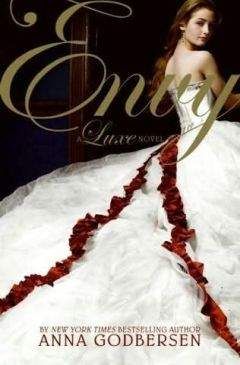They will say such things as, "I don't know. You all look the same to me, but you're more expensive. What can you do for us on the price?" Left unchecked, these people will drive you to the door and then catch you by the coattails.
Also remember that there is a mirror image of client relationship management (CRM) for procurement people called supplier relationship management (SRM). Also called strategic sourcing, procurement best practices call for segmenting suppliers into different categories based on the importance of their value and the availability of substitutes.
This gives them four segments:
• High importance, low substitutability — strategic
• High importance, available substitutes — preferred vendor
• Low importance, low substitutability — manage risk
• Low importance, available substitutes — commodity
Many procurement people actually know the difference between buying strategic solutions and buying commodities, but they often pretend that you have less value to their firm than you do. Moreover, ERP systems for the bigger firms now provide procurement with information about global spending with your organization, as well as prices your firm has quoted elsewhere in the world. This is information the sales reps themselves often don’t have. And information is becoming available through consultants about what prices were quoted to other firms.
While they focus on price, you must continue to refocus on value. They will argue over thousands while you may be making them millions. Where do you find this value? From the initial discovery and linking your solutions up the value chain.
At the same time, the attorneys are paid to imagine the worst possible outcome — litigation — and many want to prelitigate in the contract. You need the powerful executives who will be using your products and services to explain what is normal risk, what can and cannot be achieved, and your competitive differentiators and their value. Without their involvement negotiated early in the sales cycle, you will find yourself in a battle of wits with lawyers and procurement—unarmed (see Figure 5–1).
In our negotiating classes, we teach that the best practice is to bargain early in the sales process, while you have something to trade, to get your sponsors to advocate for you with procurement. Why would they do this for you? Remind them that their future depends more on the success and risks of the project or product than on negotiated price—and that a degree of partnership will be necessary for the future give and take.
Remind them that the relationship includes the negotiation. And you can’t go from partnership to abuse and back to partnership—especially if you have taken all the margins out of the deal. If they don’t agree to arbitrate value on your behalf later, you might seriously consider not investing further resources if you see a price beating coming in your future. We have a commodity buyer who has called us every year for six years. We have fired the buyer as a prospect every year. We know the company won’t pay for value in the end. We spend a little time to see if the company’s culture has changed or if the company representative person has enough power. If not, we move on.
Understand your value, continuously refocus the discussion around it, and never go to procurement alone. (Although you actually may have to physically go by yourself, your sponsors should have paved the way and be in the background, supporting your value.)
Value-Based Account Segmentation
There are many ways to segment accounts in a market. Since you cannot and should not invest in all accounts equally, deciding in advance which accounts will yield the greatest return on investment of additional time and resources is obviously a key decision. Traditionally, among the factors usually considered are historic revenue streams, reference-ability, account profitability, and quality of the relationship.
In Hope Is Not A Strategy, we defined six levels of buyer-seller relationships that have evolved over the years (see Figure 5–2). On the right side of the figure we define six levels and roles of sales talent that can be committed to an account. We also identify six different types of buyers based on the way they buy.
For firms selling value-added solutions rather than commodities, a developing best practice is to allocate resources and define strategies based on the way the customer is willing to pay for value. For example, if you commit partnering resources to commodity buyers, you will partner yourself broke lavishing attention on firms that will still put you out for bid.
For commodity buyers and repetitive buyers buying noncompetitive add-on sales, the strategy is to make it easy to buy and keep the cost of sales low using the Web or telesales. For buyers who buy in competitive evaluations, “hunters” who can manage and win these political battles are a necessity. If you put your “farmer” up against their “hunter,” you will get creamed.
A solution buyer will allow you to collaborate, understand his or her needs, and co-develop a customized solution with a consultative seller. This obviously takes a significant investment of both time and talent. A demand creator can find a dormant business problem and create a vision of a solution. Then he or she finds a sponsor who is a change agent with enough political power to drive the proposal into buying activity.
A danger exists in investing these resources and valueadded strategies if you are then going to be shoved down to procurement, only to have the value stripped out of your deal. The gamble is that you will have gained enough differentiation through collaboration that you are uniquely qualified to provide the solution and that your sponsors have enough power to arbitrate for you with procurement.
Partnering is obviously a powerful company-to-company business model, but fewer than 10 percent of your candidates can achieve this special relationship, which must reach all the way up to the CEO level.
Size is not the issue. It’s a matter of their culture. It’s how the organization buys and sells value. You can judge it by the way the organization treats other vendors. If the organization doesn’t partner with anyone else, it isn’t going to partner with you.
ROI Alone Is Not Enough
In the area of pain, one observation we’ve made over the last few years is that in a down economy, return on investment (ROI) alone will not compel an opportunity to close. Many training programs that address selling to executives focus on the financial benefits exclusively by teaching how to calculate the benefits of your solution and then calculate a stream of cash flow and an ROI on that assumed cash flow.
One of our clients was selling new point-of-sale systems to Wal-Mart. In their eight-store pilot, they determined that, using their systems, Wal-Mart could save $2 million a year, spread over eight stores, or $250k per store per year.
But, since they didn’t link the savings to any strategic opportunities for Wal-Mart, it was no surprise the pilot went on for two years with no closure.
In the grand scheme of things, they failed to recognize that $250k per year per store wouldn’t get anyone’s attention.
For a company that does almost $300 billion a year, a $250k annual savings is merely a rounding error.
There weren’’t enough zeros in their value proposition to be compelling.
ROI is now a requirement to get in the game. It is no longer a differentiator but a satisfier. We can look at forecasts and tell you which deals are going to stall. Where your solution is not linked to compelling value (emotional and political pain associated with a powerful person), it is probably not going to close anytime soon. Logical arguments alone are insufficient. It takes a crusader — a powerful person inside the organization who wants it to happen — to get resources from other projects or money in the budget and assume the risks of any new procurement.
Jack Barr tells a story of when he was competing to win the Hershey account while at SAP:
“I was involved in a very competitive situation, selling manufacturing/order processing software to the Hershey Company in Pennsylvania.
My competitor and I were called in to present to the executive committee. Before the meeting, I went through my presentation with my internal coach to make sure it hit the mark. My coach told me that, as a company, Hershey was very focused on children.
Milton Hershey, the company’s founder, never had a formal education.To him, providing this opportunity to others was an important priority. He and his wife established a school for orphans and made sure that the town of Hershey had the finest elementary and secondary schools possible. Every year, millions of dollars are donated to the Hershey Foundation, which continues to fund the orphanage and schools.
‘Everything is about the children when it comes to Hershey,’ my coach said. ‘A percentage of our net profit goes to the Hershey Foundation every year. So before we do anything for the business, we always ask ourselves,Will it benefit the children?’
Based on that conversation, I added one slide to my presentation that figured how much our solution could save the company in inventory costs. I was able to show them how much this savings would add to their bottom line and how many additional millions of dollars could be donated to the Hershey Foundation, by the Hershey Company, as a result over the next five years.
Though my competitor’s solution would also have saved them in inventory costs, he didn’t present it with the same linkage to the emotional and personal benefit to the Foundation that I did.The feedback I got, after I won the deal, was, ‘Jack really understood what we are all about.’ ”
Someone (or a group of people) with power needs to see the vision and opportunity of how a solution can help his or her organization defeat the competition, enter new markets, regain and/or capture customer share, produce significant shareholder value, or provide a competitive advantage to the company.
Gary, a sales rep reporting to Jerry Ellis, one of our principals, was selling planning solutions systems to a large health care organization.
Together, they had gained access to the company’s vice president of finance, Bruce, who reported directly to the CEO.
While meeting with Bruce, they asked him why he was planning to replace the current use of Excel in his organization with a new budgeting and planning solution. Bruce responded with a long list of reasons why the current use of Excel required was overly time-consuming and caused his team to work long hours, including weekends, to meet the continually changing requests of senior management.
After listening to Bruce’s explanation of the frustration the current approach caused his team, Jerry said, “I know senior management is concerned about your team’s quality of life, but the tool you are using now gives them the information they are asking for. I doubt they will spend $250k just to make your life easier. How will you justify our solution to them?”
![Rick Page - Make Winning a Habit [с таблицами]](https://cdn.my-library.info/books/no-image.jpg)



